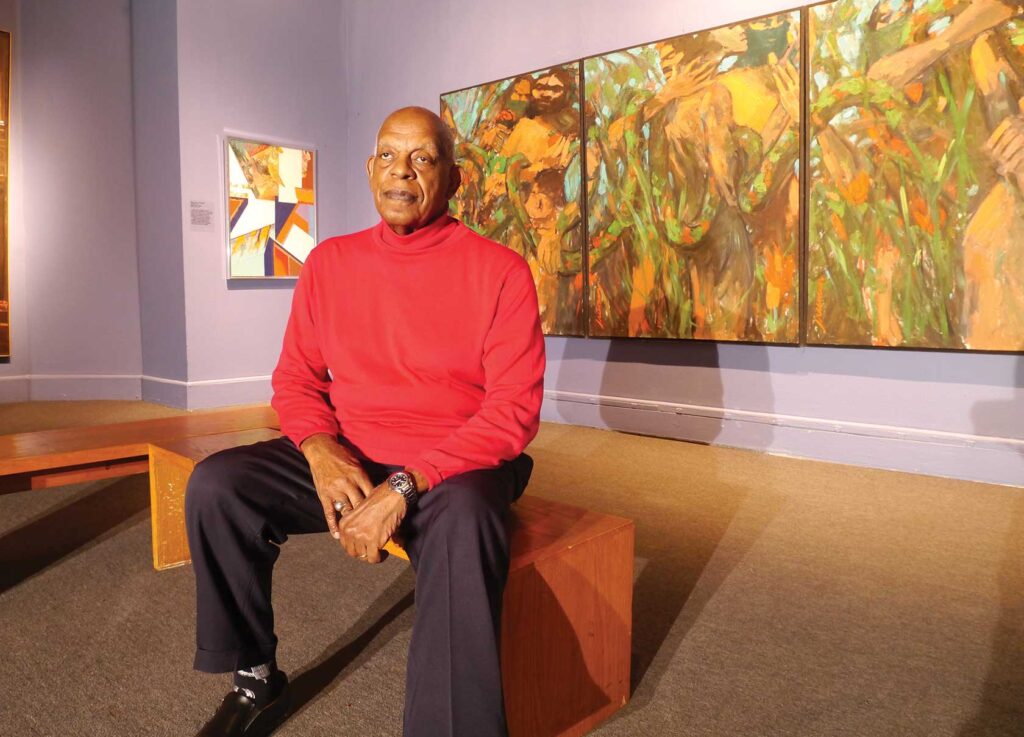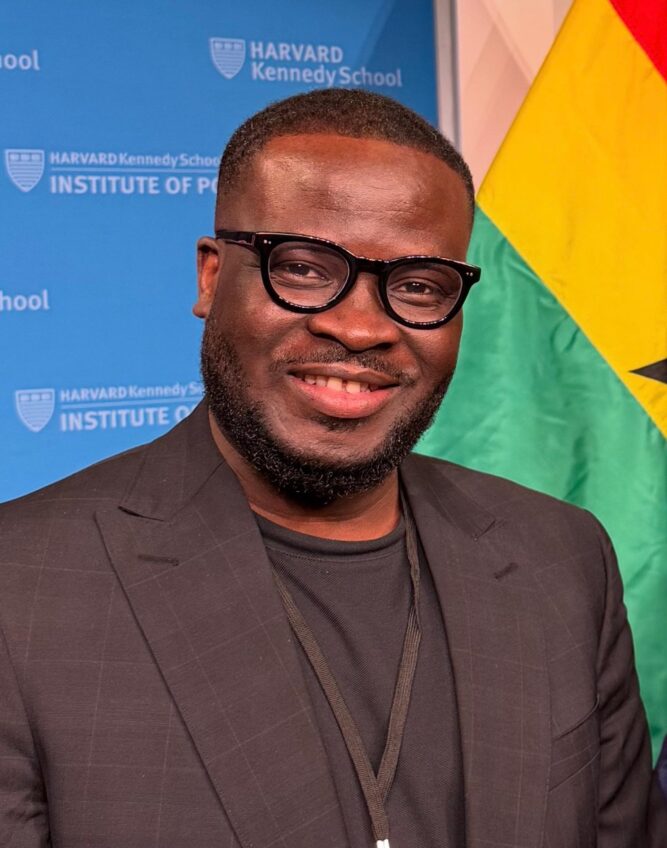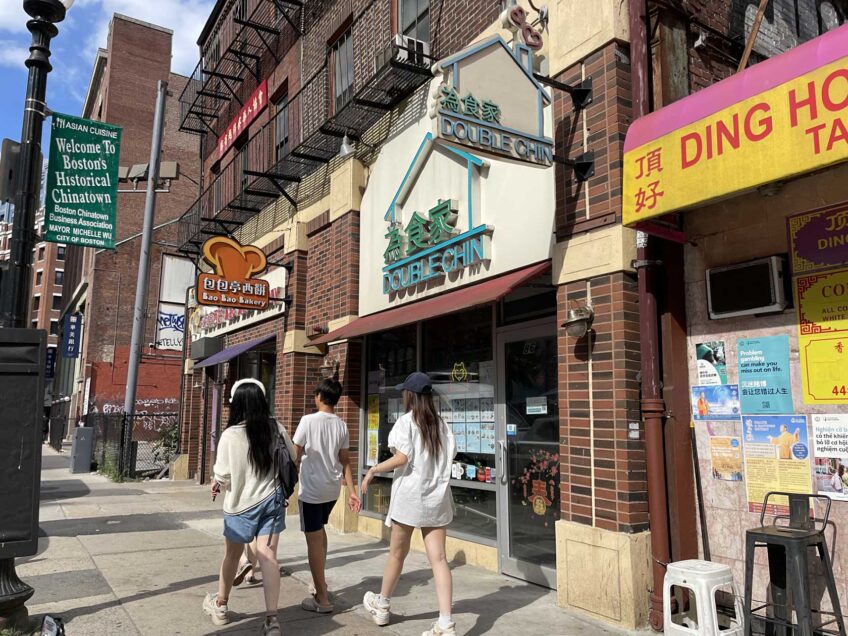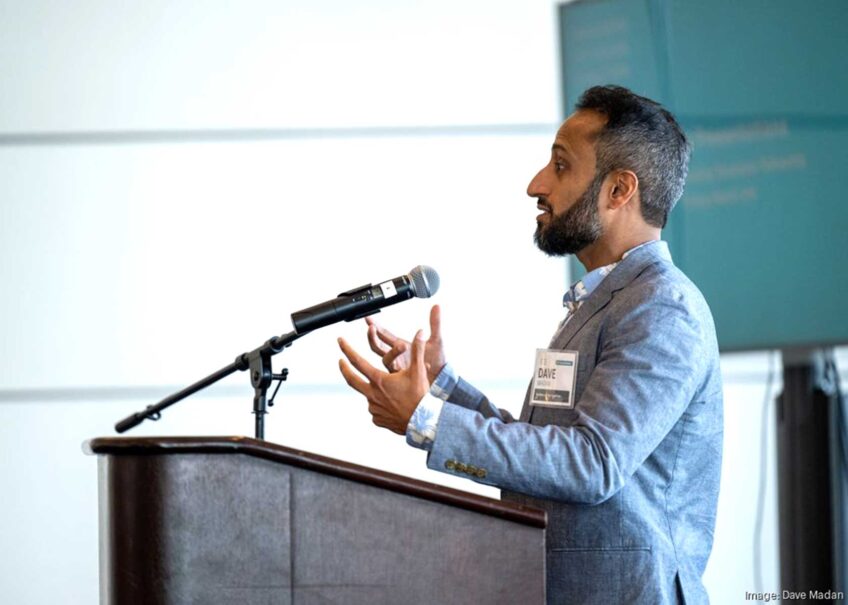Roxbury’s Museum of the NCAAA looks toward future
Roof repairs, stone work on 153-year-old building

When Edmund Barry Gaither relocated to Roxbury from Atlanta in 1969, the idea of creating a museum in the predominantly Black Boston neighborhood was just a seed in the mind of Elma Lewis, who had just formed the National Center for Afro-American Artists a year earlier.
Lewis had pressured the Museum of Fine Arts to draw on its resources to help fund a museum in the Black community. The MFA hired Gaither to help create it.
Now, 54 years later, the Museum of the NCAAA, housed in the Abbotsford Mansion building on Walnut Avenue, has more than 3,000 items in its collections, including traditional African artworks and works of the 19th, 20th and 21st centuries by artists from Boston, across the United States and around the world, with a special focus on Caribbean artists.
For much of the last half-century, the museum has been the only cultural entity in Roxbury open to the public six days a week, all year long. In addition to its collections, the museum has hosted exhibitions of local and international artists, promoting their work often years before they are noticed by white art critics.
“We’ve always seen the museum as a symbol of representation,” said City Councilor Tania Fernandes Anderson, who grew up in Roxbury. “It lets us know we belong here. We are rooted in this place.”

The Abbotsford mansion, built in 1870, now houses the Museum of the National Center for Afro-American Artists. The building is currently undergoing renovations. CITY OF BOSTON PHOTO ARCHIVE
The 153-year-old building that houses the Museum of the NCAAA appears to be taking it slow these days. It’s in the midst of a two-year extensive renovation of its exterior. Already it’s received a new slate roof and copper flashing, a $1 million job that was only recently completed. Currently, it’s undergoing work on its puddingstone and limestone façade. Next, Gaither hopes to replace the building’s windows and doors. Beyond that, Gaither says the museum needs an elevator and a wheelchair-accessible entrance.
To fund the ongoing renovations, Gaither has tapped the National Trust for Historic Preservation, the Henderson Foundation, The Massachusetts Preservation Projects Fund and Community Preservation Act funding.
“It will give us a completed exterior look,” he said. “I’m very optimistic that we’ll get the building to a good place.”
Earlier plans
The renovations happening now weren’t always in the plans. For much of the last two decades, Gaither and the museum’s board members had been working on an ultimately unsuccessful bid to develop a new museum space on Parcel P3, a nearly eight-acre Lower Roxbury plot of city-owned land across from the Boston Police Department headquarters.
Gaither said he was driven to undertake that project out of a desire to preserve Elma Lewis’ legacy in Boston.
“I brought to that a painful consciousness of a lot of people like Elma Lewis and Katherine Dunham [who] built institutions that, a decade after their lives ended, were lost,” he said. “I thought, ‘We can’t let that happen.’”
The museum teamed up with real estate developer Feldco Development in a plan that would have included office and retail space and market-rate housing along with the new museum space. The city pulled the plug on the project in 2019, after 15 years during which the team failed to secure adequate financing to move the project forward.
“I spent a decade and a half on P3,” Gaither said. “I can’t tell you how disappointed I am that the deal collapsed.”
Looking ahead
With P3 in the rear view, the focus on the Abbotsford mansion comes as a relief to community members, many of whom were concerned about the fate of the 1870 building.
“It’s a central focus of the past and present cultural life of Roxbury,” said Louis Elisa, president of the Garrison-Trotter Neighborhood Association. “There’s no other place you can point to that has the depth of cultural and civic activities.”
Throughout the renovations, the Museum of the NCAAA has maintained its outdoor programming on the expansive lawn overlooking Walnut Avenue, including festivals for Juneteenth, the Eternal Presence Festival and the Big Head Festival. In December, the museum resumed its annual Black Nativity performance at the Paramount Theatre, continuing a 53-year tradition.
Gaither says he’s aiming for the museum to reopen on a weekend schedule starting in June, though the ongoing exterior renovations may complicate that.
“It may be we don’t move forward until the scaffolding comes down,” he said.
As for the future, Gaither is looking to step back from his duties at the museum after 53 years.
“We are actively looking to introduce new executive and artistic leadership,” he said.







